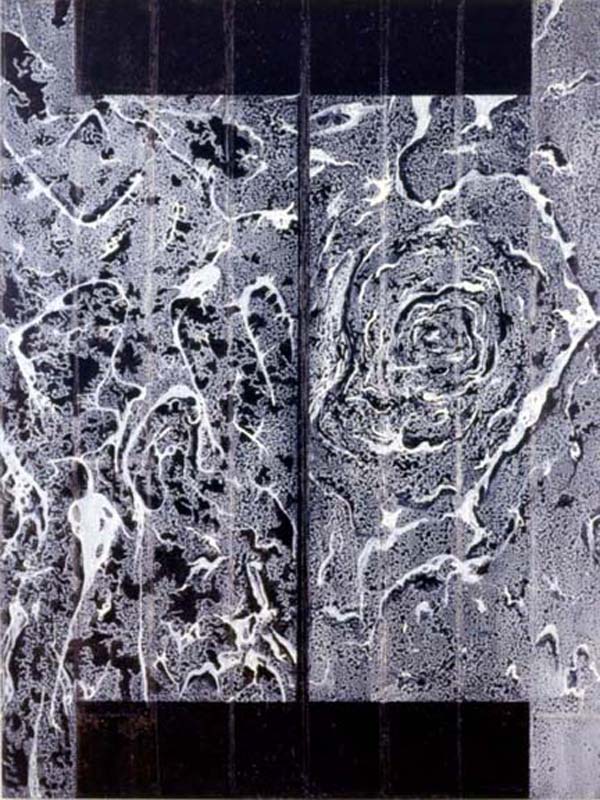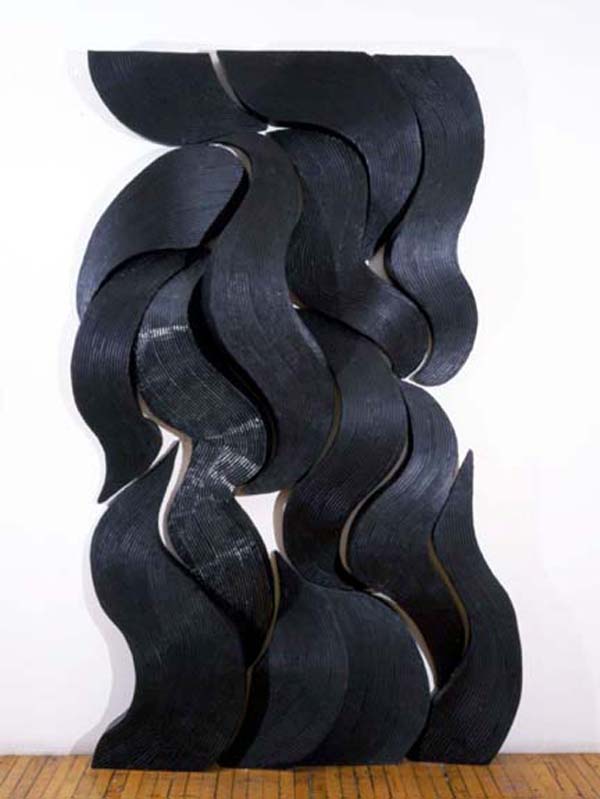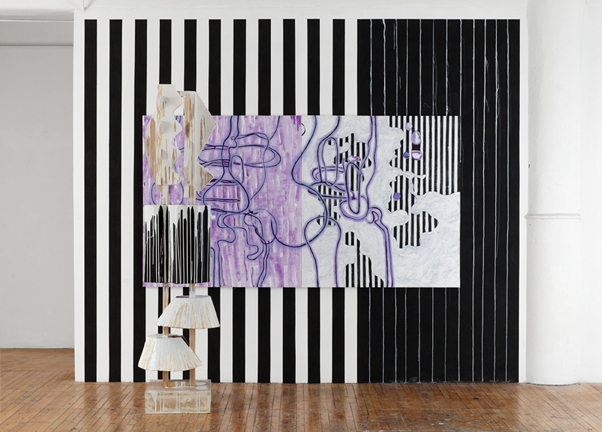David Webster
David Webster is painter and sculptor whose work has been shown internationally, must recently at the Centre Pompidou. His art is in major collections, including the Museum of Modern Art. In addition, he was actively involved with the Guerlain Foundation for many years, both curating shows and advising on purchases of work, many of which were acquired recently by the Pompidou. His work mixes science and art, specifically medical art. His father’s terminal illness led to the use of histological imagery, as well as x-ray technology in the production of work. Later, this source material became more free-form moving between painting and sculpture and installation. The obsessive mark making in Webster’s process comes from a background in print making. Often small tools or old cardboard or brushes are used to create stencil effects that are related to the patterns of cell structure and DNA. These repeated marks are subsequently destroyed, annihilated through further gestures in a procedure analogous to that of biological processes of growth and decay, enlargement and subsidence. There is a build up of multiple transparent layers. Each step in the process determines the next until the work is completed. Recent work involves freestanding sculptures placed immediately in front of arrangements of paintings, the latter sometimes done directly on the wall. In this manner different “systems” are “stuck together” in an escalating complexity.
Question:
Your work in general is abstract, but often based on microscopic images of the body, and occasionally you make explicit references to the figure, as in your “raincoat sculptures.” How do you decide to veer toward the figural or toward the abstract? And what conclusions have you drawn about the possibility of abstraction without a referent? Is there for you such a thing as “pure” abstraction?
Answer:
I guess I have always been attracted by the “fuzzy” periods of artists careers or art movements.
Periods where things are not as they were, but have not as yet become what they will be. These periods give us a real insight into the artist’s rationale and thinking as he or she mulls over the myriad possibilities and directions that one could take. Looking at Mondrian, we can follow his years of landscape painting breaking up more and more by geometric forms ,culminating into full blown abstraction. Or in Cubism where Braque and Picasso take their Analytical Cubism of objective subject matter to an extreme, devoid of almost all reference. It’s this breaking up process that interests me, the point where an invasion of elements or technique challenge predisposition . The still life or landscape become fractured giving clues of former intent while at the same morphing into territory devoid of reference.
In my own work this play between abstraction and referential intent are in constant play, both philosophically and in the physicality of the making of the pieces. Quite by accident in a doctor’s officeI happened upon a book on histology , the microscopic study of bodily tissues. That same day I had accidentally sprayed a wet painting with turpentine , but the results looked exactly like some of the samples in the book. So I began to control the repeated accident and to choose certain conditions in the body that are the result of the human condition, nervousness, indigestion, hypertension , etc, etc. The results show that even though the original imagery is referential, the final product is quite abstract. Adding to all this layering, I started to apply this mark making to recognizable objects, in this case raincoats that would be pinned to the walls and children’s clothing that were made into free standing sculpture. So the referential becomes abstract and then becomes referential again. Information feeding back on itself, referencing and cross- referencing . What is important to me in this way of working is the latitude this gives me both in intent and the way of working in both painting and sculpture. It is not important to me whether these pieces are seen as abstract or referential, though I’m now making some work that become more abstract devoid of the histological reference, though certainly the way they are made is informed by the earlier investigations. Pure abstraction I guess does not exist for me, I’m somewhere in the fuzzy middle where I’m quite content.
One Question/One Answer is a series of very, very brief conversations about art and life between Romanov Grave and a variety of extraordinarily interesting artists.









David is an amazing artist. My husband and I love his work, We have acquired several works (different media) for our homes, and are eagerly following his career….
Absolutely, David, you are an extraordinarily interesting (and may I add, gifted) artist. Your “Voyage of Conquest” sends one back and forth between the known and unknown areas of you, the artist, and then pushes the viewer to discover where their own known and unknown places lie.
Jim and I look forward to seeing you in Turkey very soon!
With love, Melanie and Jim xoox
We became familiar with Webster and his art when we lived in Paris and were fortunate to have acquired a small number of his works. We continue to follow his progress. His works have traveled with us as we moved around the world, taking on new meaning in different contexts.